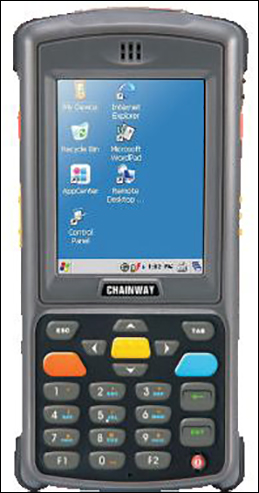West African Examinations Council Manages Student Testing Via RFID
时间: 2015-06-23 14:09
Exam supervisors in Nigeria have been using readers to capture data from RFID-enabled badges to verify each student's authenticity, as well as create an electronic record of who took a particular test.
By Claire Swedberg
The West African Examinations Council (WAEC) has launched an RFID-based solution that enables testing supervisors to confirm the identity of each student who takes a test, in order to thwart exam fraud by college applicants and provide security. WAEC conducts international and national examinations within its member countries (Nigeria, Ghana, Sierra-Leone, Gambia and Liberia). Testing season is currently underway, and the system is being used to validate every student, and to store data regarding who took which test, and when and where this took place. The solution—provided by Botosoft Technologies, of Lagos, Nigeria—employs HID Global passive high-frequency (HF) RFID tags, printer-encoders and readers.
Each spring and summer, 2.2 million students take exams at more than 15,000 testing centers that WAEC operates in Nigeria. The process has required students to register for their exams through their schools' online service in advance, and to upload photos of themselves. They then printed out a paper version of their registration, which includes their photo, personal information and test reservation details. Exam supervisors compared the printed form against the individual's actual face and confirmed that he or she could enter. However, the paperwork could have been doctored, with another picture placed where the actual applicant should be displayed. The system also did not create an automated record of who had reported to take the test at the scheduled time.

Each test taker is issued an ID card containing a passive high-frequency RFID inlay.
With an automated system from Botosoft, WAEC can accomplish two things, according to Tolulope Agbeyo, Botosoft's director. It can automatically prove that an individual has not doctored the paperwork and is, therefore, authorized to take the test. And it can collect data about who takes which exam, as well as how many individuals arrive and from what schools. The agency can then use this information to improve on how those tests are administered in the future, and to record malpractices against individual candidates and centers in the event that cheating is discovered.
With the Botosoft system, after a student registers for an exam, his or her information is gathered in the software to create a profile to include that individual's name, school, date of birth, subject test interests and photograph. That data is stored in the Candidates Identity Verification, Attendance, MalPractice and Post Examinations Management System (CIVAMPEMS), provided by Botosoft.

At the test sites, staff members are equipped with Chainway C2000 PDAs with built-in HID Global RFID reader modules.
WAEC then uses HID Global Fargo ID card printers to create an ID card with an integrated HID Global 13.56 MHz passive RFID inlay (compliant with the ISO 15693 standard) for each student, and to encode that inlay with data about the test taker, along with his or her photo and a unique ID number. That information is also stored in the CIVAMPEMS software on WAEC's server, as well as on Botosoft's server, for the purpose of redundancy. The encoded ID cards are then sent to the exam applicants' schools, which distribute them to the appropriate students.
At each of the test sites—there are a total of 15,528—staff members are equipped with Chainway C2000 PDAs with built-in HID Global RFID reader modules, says Robert Smith, HID Global's general manager. When students arrive, the workers use the Microsoft Windows-based PDA to read the RFID inlay of every ID card presented to them. They can then view each student's photo and read the data encoded to the card, compare the student's physical appearance with the image and text printed on the card's front, and thereby confirm that he or she is not a fraudulent test taker. The C2000 has a GPRS connection that forwards the tag's data, via a cellular connection, back to the CIVAMPEMS system operating on WAEC's and Botosoft's servers, thereby indicating who has arrived for testing, and at what time and location.
If the cellular connection is not working, the captured ID data is stored on the PDA. That information can then be uploaded later via a cabled connection, or once a cellular connection is re-established.
If the supervisors find that fraudulent activity has occurred, such as a bogus test taker or signs of cheating on the test (for instance, the use of a calculator or a mobile phone, or two test forms containing the exact same written answers), they can input the ID number printed on each perpetrator's badge, or read the badge's RFID inlay with the device and press a prompt indicating an instance of malpractice.
Prior to using the Botosoft system, says Femi Agoro, another director at Botosoft Technologies, WAEC lacked an accurate system of determining who was taking which exam, and when. Therefore, it was harder for the council to organize the test-taking locations and frequency for each school or geographic area. With the CIVAMPEMS data, the agency can better manage future tests.

WAEC's Charles Eguridu
The RFID system also eliminates the need for paper registration forms, and ensures that mistakes are not made by WAEC personnel who must compare the photos printed on those forms with the appearances of the test takers standing before them. The system was taken live for the testing season in May 2014, Agoro reports, and is being used again this year.
Charles Eguridu, the head of WAEC's international examinations department, says that the agency is utilizing the data for analytics purposes, in order to improve on when and where it schedules testing. "We use the data for statistical analysis, such as the number of students who took the test at various locations."
The organization also uses the information to look into any location that might pose a high risk for cheating or security problems, since it ensures that every individual who enters the exam center is a student, and not an impersonator who has come to disrupt the testing, or to cause injury to employees or other students. "The data is very important for us," Eguridu states. "There are cases of impersonation involving a large group of examinees who can pose serious threats to the WAEC officials trying to moderate the exams."
Additionally, Eguridu adds, the Nigerian government has used the WAEC testing data stored in Botosoft's software to identify the 240 girls who were abducted by radical insurgent organization Boko Haram last year. During the abduction, the girls' school was bombed, destroying all records. "There was no way to confirm exactly who was taken, and there was even skepticism about the abduction, as they could not confirm the identities," Eguridu says. "The president of Nigeria turned to the WAEC organization for help, and WAEC was able to use its examinations process to identify the girls who had been in the system, providing their photographs, names and other information."
To date, the WAEC has used the Botosoft system with RFID technology only in Nigeria. However, the agency plans to expand the technology's use to other West African nations next year.
